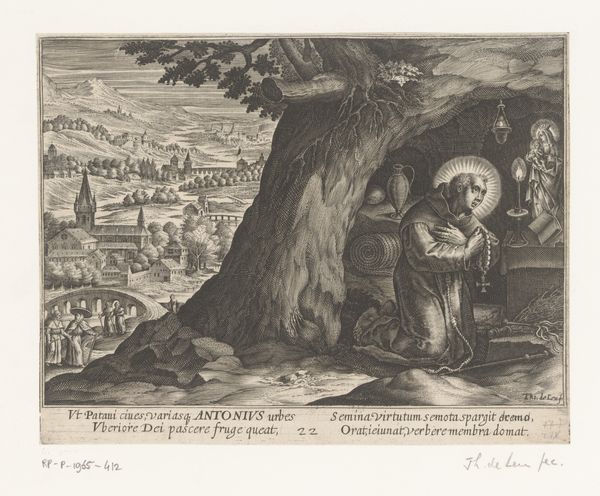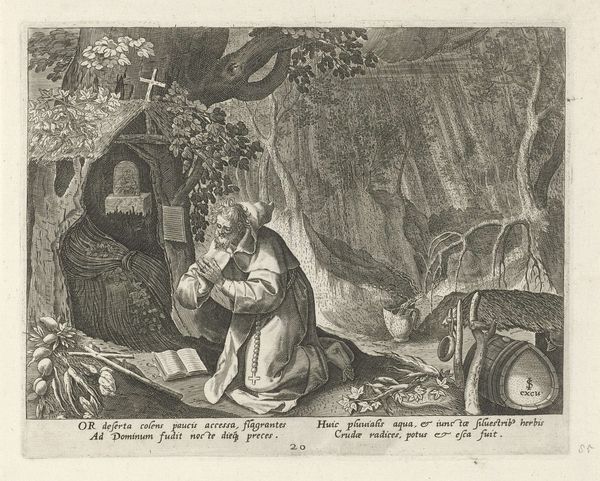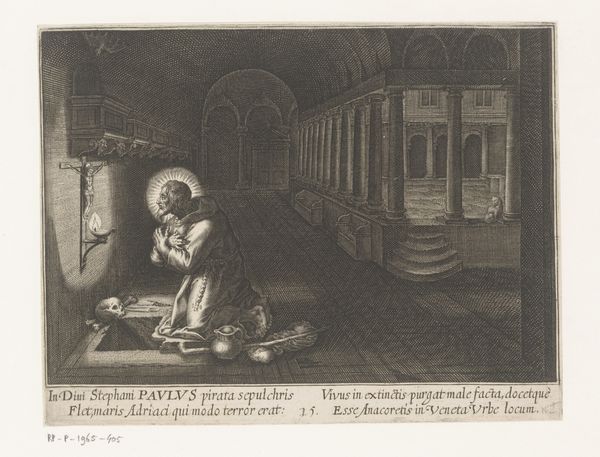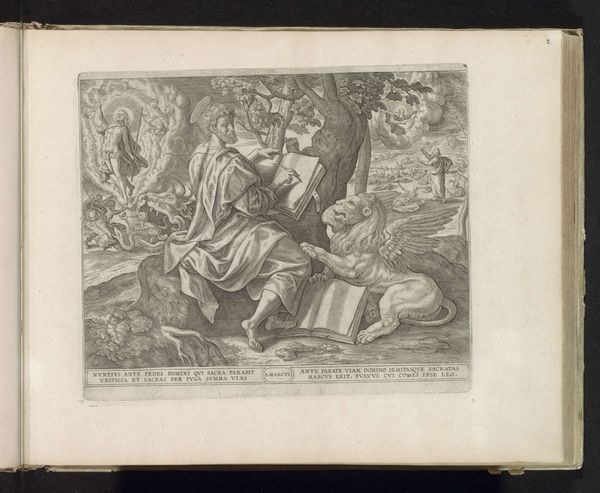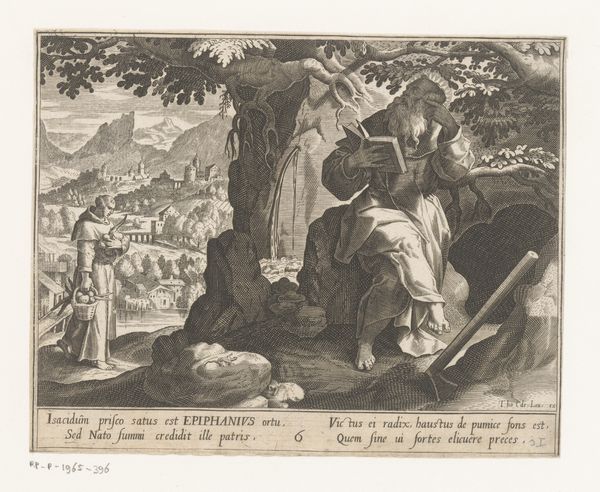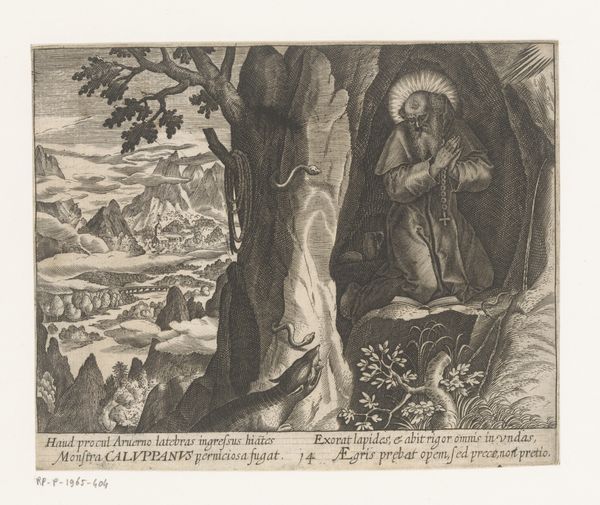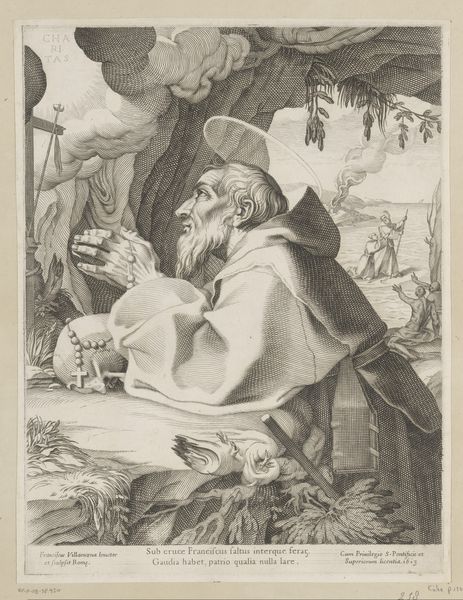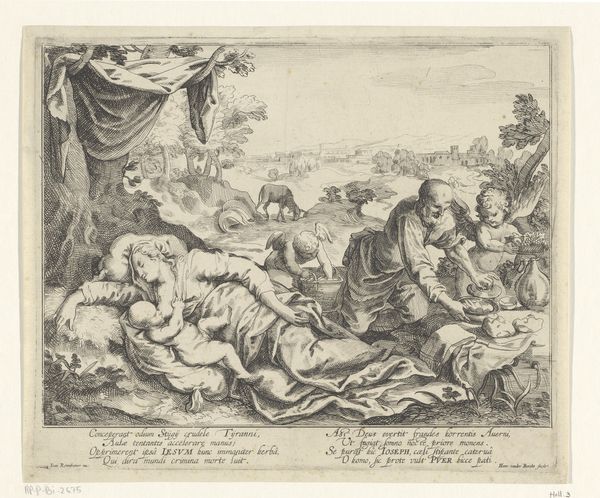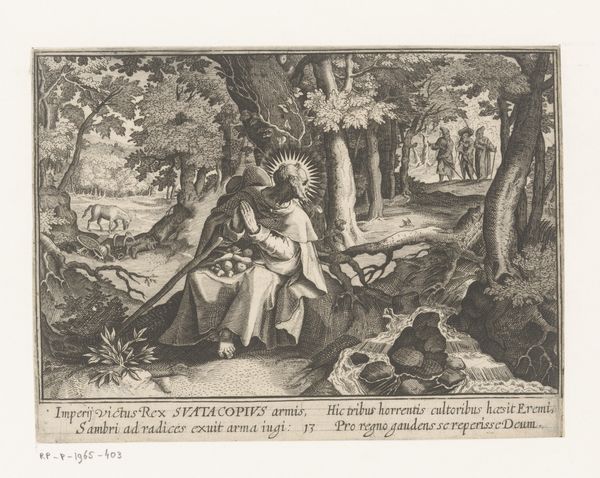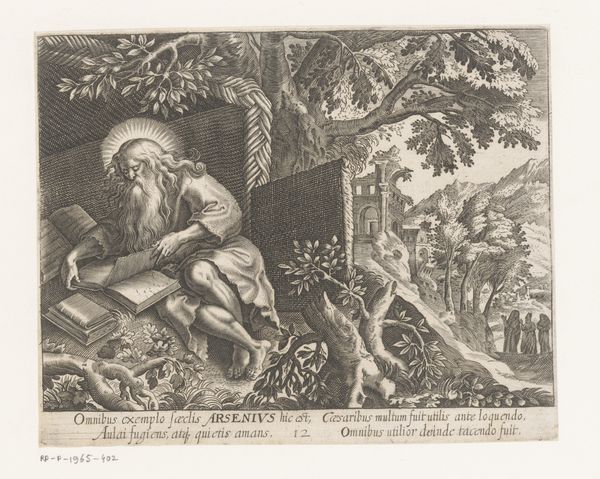
print, engraving
#
portrait
#
baroque
# print
#
old engraving style
#
landscape
#
portrait drawing
#
history-painting
#
engraving
Dimensions: height 142 mm, width 170 mm
Copyright: Rijks Museum: Open Domain
Curator: Today, we're examining a print entitled "Marcus de kluizenaar" or "Marcus the Hermit," created after 1594 by Charles van Boeckel. Its delicate lines draw us into a scene of quiet contemplation. Editor: Indeed. I’m struck by the composition—how the artist uses a stark contrast between the shadowed grotto on the left and the luminous landscape on the right. The figure feels almost compressed, a formal echo of the cloistered life. Curator: Absolutely. Note the careful rendering of the light source, presumably divine, illuminating Saint Mark as he writes. Observe the semiotic weight given to the quill. It links Mark to divine revelation through writing, transforming mundane script into sacred utterance. Editor: Yes, but even more than just “writing,” this print makes an argument about spiritual vocation. Mark as an icon—pen in hand, bare feet in direct connection with nature and a crucifix to show his devotion and suffering. The plants intertwined around the cross—aren’t they suggestive of both physical suffering and renewal of nature, as symbols for the same experience? Curator: A provocative reading. One cannot dismiss the use of the landscape. See how Boeckel interweaves Christian symbolism with established iconographic symbols to produce a richer message—melding human history and personal expression through image, creating a dialogue for those both in the spiritual world and outside of it. Editor: This blending becomes so prevalent in baroque art, which uses drama to display these values of humility and purpose—but its effectiveness relies not only on its artistic quality but on the audiences cultural conditioning that provides common meaning. What does this piece say to people today about purpose? Curator: These kinds of dialogues between history and spirituality, symbol and expression, allow the observer and artwork to both inform one another, through line and form that transcend the boundaries of Baroque aestheticism. Editor: This image asks for sustained and considered readings, not simply decoding obvious visual clues but connecting more closely to both cultural understanding and formal execution.
Comments
No comments
Be the first to comment and join the conversation on the ultimate creative platform.
